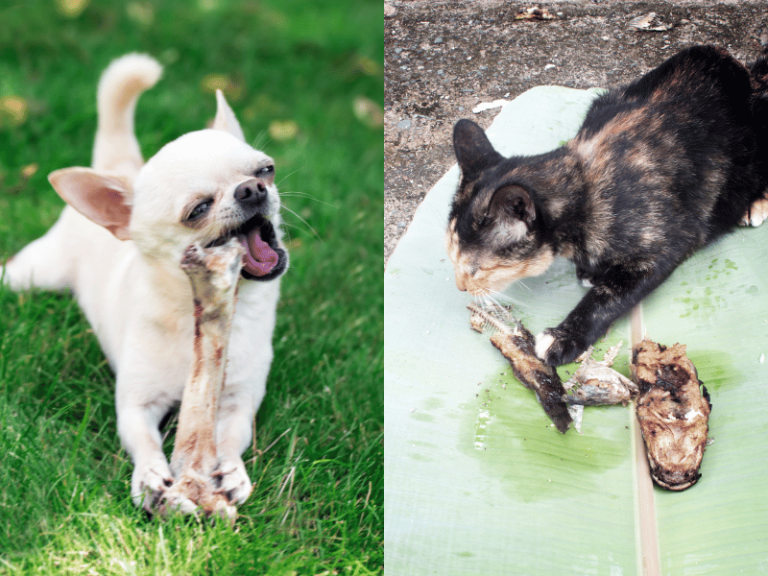If someone told you that they saw goats and rabbits ravenously devouring bones, you would be very surprised. However, people find it perfectly natural for cats and dogs to eat bones.
Why do you have such a different attitude towards them? You might say, it’s their natural temperament!
This answer is naturally unsatisfactory.
Cats and dogs can eat bones because they have a digestive system that is different from that of goats and rabbits.
Let’s take a look at a few “workshops” in the digestive systems of cats and dogs!
The first workshop is located in the mouth, equipped with many “tools” for pounding and grinding. The sharp incisors at the front are like chisels for cutting food; the sharp canines at the top are like pliers for gripping food; and the molars with recessed tops are powerful little grinders. Moreover, the tongue acts like a mixer, gradually grinding the bones into fine particles.
When the tongue rolls the food into the throat, the bone fragments, like sliding down a chute, are pushed by the peristaltic movements of the esophagus into the second workshop—the stomach.
This is a “chemical workshop.”
It’s not because someone leaked the news, but because the stomach has its own “scouts,” so it knows in advance that a batch of goods is coming for processing and has already made sufficient material preparations. Hydrochloric acid plays an important role in the chemical process, and the stomach has ample reserves of it, many of which have just been freshly produced.
The term “catalyst” might not be new to everyone. When producing oxygen by heating potassium chlorate, manganese dioxide is often added as a catalyst to speed up the production of oxygen. The catalyst we are talking about here is not this type, but one that cats and dogs produce themselves, called enzymes. If we compare their work, the power of these enzymes is hundreds or thousands of times greater than that of catalysts like manganese dioxide.
Although bones are labeled as “hard,” they are essentially composed of proteins, calcium phosphate, and calcium carbonate. After being mechanically crushed into pieces, they are then processed by hydrochloric acid and enzymes, turning into a paste-like substance.
This is not the end. The substance is then pushed into another chemical workshop—the intestines. This time, they encounter not the same old adversaries from the previous chemical workshop, but a whole new set of enzymes that relentlessly break them down until they are dissolved in water and absorbed by the animal. As for those stubborn remnants that can’t be digested, they are finally expelled through the anus.
Now let’s take a look at the “digestive factory” of herbivores! Here, the “mechanical workshop” mainly focuses on cutting and grinding work. However, the workshop lacks the canine teeth used as pliers, but these are unnecessary for them. The “chemical workshop” is quite spacious: unlike cats and dogs with only one stomach, herbivores have three or four. The cecum in cats and dogs has shrunk to a tiny size, whereas in herbivores, it is very large. These large cecums and stomachs are fermentation chambers and storage rooms for plant material. The “chemical workshop” of herbivores also hosts many living organisms, which are fermentation bacteria. Additionally, there are many enzymes here, but they are different from those in the “chemical workshop” of cats and dogs. Their task is to cooperate with the bacteria. Plant fibers, which are indigestible waste for cats and dogs, are valuable nutrients for herbivores, thanks to the help of fermentation bacteria. The fermentation bacteria, in turn, sustain themselves and reproduce in the fermentation process.

